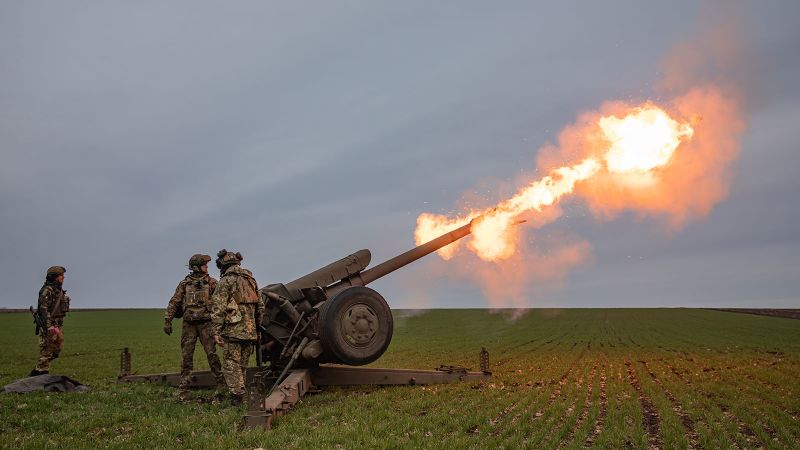- cross-posted to:
- news@hexbear.net
- worldnews@lemmy.ml
- cross-posted to:
- news@hexbear.net
- worldnews@lemmy.ml
I think artillery is going to be what ultimately wins this war. Right now Russia can glide a Soviet-era shell 70km to within a 5m target area, limited only by how many planes they can fly to launch them and the speed of the glider. Any stationary target in that 70km is a few hours away from a $35k shell that can level a factory. The only plane that can reasonably hope to intercept those Russian jets is arriving in July in very limited numbers and the pilots will have to play chicken over contested air space for dozens of Russian sorties per day. Meanwhile every impact within range of a Ukrainian soldier gives that soldier compounding brain damage.
You can’t have a frontline 70km away from any kind of support or ammunition dump. Every day risks that 70km extending to 80km or 200km as Russia improves the design. Anything trying to stay mobile is now vulnerable to bomber drones on 10km-long fibre optic jammer-proof cables. That’s the most hopeless retreat since the last time Nazis tried this and Ukraine is convinced that they’re somehow going to go on the offensive despite the war rapidly modernising in a way they can’t counter. They would have been infinitely better off surrendering in 2022.
The only plane that can reasonably hope to intercept those Russian jets is arriving in July
Pretty sure most intercepts on either side have been ground level defenses - S-200, S-300, BUK, etc
The ground systems seem like another failed wonder weapon like the western tanks were. They have the range to keep Russian jets from firing current FABs, but like the F-16s there’s a limited number of super complicated machines that have huge logistical footprints and training pipelines by design. When one of the patriot systems goes down that’s a multinational repair effort, when an S-300 fires a missile that’s a large drone target shooting $2.5m at $<50k lancets and one is harder to produce/transport than the other. Whatever one neat trick Ukraine finds, if its much larger enemy can fire 50 lancet drones at that S-300 for the cost of each missile then who will run out of ammo first? If one of those lancets destroys the launcher, which can be replaced faster with a crew that knows how to use it? If the S-300 manages to hide in the perfect fortification the perfect distance away from lancets and FABs, an Iskander has 5x the range of those and a massive warhead at a similar cost to one of the S-300’s missiles.
Ukraine started out strong because they found a way to cheaply destroy expensive things in bomber drones. That’s been countered, replicated, and refined by their enemy to the point that it’s no longer their advantage. Ukraine never figured out a second cheap way to destroy expensive things while Russia did. Ukraine’s answer to that is throwing expensive things it can’t afford or repair domestically at the cheap things which cause massive attrition. Their drone attacks into Russia are symbolically punching a bear as if it’s one punch away from death and can’t reciprocate.
Ground based air defense will have to adapt too. Since Russia has air superiority we’ll probably not see the systems that could efficiently counter the drones and FABs they are dropping from ridiculous distances with pretty alright accuracy.
It will have to adapt, but if I’m drowning in the ocean I also have to adapt by growing gills. Can I do that before I drown is the question. Personally I think I could because I’m smart enough. Can Ukraine adapt its complex AA systems to a very cheap counter in time to not be overwhelmed by that cheap weapon is the question that has to be asked. The cheaper thing they’re fighting will only become cheaper and better with time while they have to invent the cheaper better missile as they’re firing it to save the launcher. To me it seems like they’re back to hunter-killer teams with MANPADs, which they already have and which we already see the full capability of.
bomber drones on 10km-long fibre optic jammer-proof cables.
Hadn’t heard of this TOW like drone. Do you have more info on it?
I wonder if the 10km optic fiber would be much cheaper than using electronics on each drone.
I think comrade Yogthos posted a better article that mentioned these, but either way it’s a lot cheaper than having your drone harmlessly drop to the ground.
It definitely still looks experimental and has drawbacks for how it’s flown, but now small bomber drones can be intercepted/jammed more easily and the highly trained crews are vulnerable to comparably priced Russian glide bombs. I think something like that or its electronic equivalent will allow them to accurately place one drone on one important target and then move before the Russians can blow up them up with their UAVs.






